#flora: south africa
Explore tagged Tumblr posts
Text

Adenium oleifolium in the Kalahari desert, South Africa
by jaffles
#flowers#flowering plants#adenium oleifolium#adenium#Apocynaceae#flora: south africa#flora: africa#plantae
87 notes
·
View notes
Text

" Kelp Canopy " // © Helen Walne
#Cape Town#South Africa#nature#Underwater Photography#Fauna#Flora#Algae#Kelp#Marine Life#Marine Biology#photography#aesthetics#wanderlust#explore#follow#discover
131 notes
·
View notes
Text

King Protea, Western Cape, South Africa
#south africa#africa#original photography on tumblr#wildlife photography#flowers#south african flora#protea#fynbos
27 notes
·
View notes
Text
Went out shopping with mum and bought myself a pot of Variegated String of Pearls (Curio rowleyanus) or better known by its synonym Senecio rowleyanus. This creeping succulent vine is native to the Cape Provinces of South Africa. Also called string of beads, it comes in both green and variegated colours. The latter had pearl-like leaves that are swirled in cream, green and sometimes even pink and purple colours with the right combination of sun stress and water.

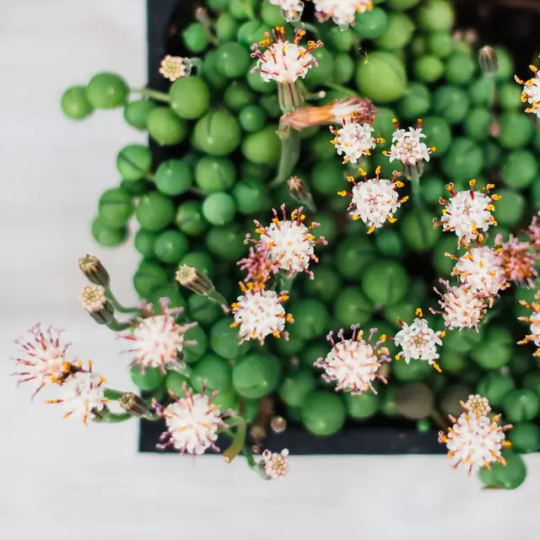
youtube
Green String of Pearls image from here.
#String of Pearls#Curio rowleyanus#String of Beads#Senecio rowleyanus#Green Form#Variegated Form#Vine#Cape Provinces#South Africa#Succulent#Flora#Plant#Plant Care Video#Youtube#Non-Food#Buffetlicious
31 notes
·
View notes
Text










Sporting two impressive horns, the black rhino, which weighs up to 1,350 kilograms (3,000 pounds), isn’t really black at all.
Much like the “white” rhino, it’s a muddy-gray color.
As the story goes, English settlers in South Africa mistook the Afrikaans word “wyd” (meaning “wide” in English), used to describe the mouth shape of the larger of the two rhinos, for the English word “white.”
So, naturally, black was then used to refer its smaller, pointier-lipped relative. Or, others suggest the name reflects the dark color it turns after a muddy wallow.
Consistent hunting and land clearance throughout the early and mid 20th century reduced the black rhino population to an estimated 100,000 by 1960.
In the following decades, large-scale poaching intensified, causing a 98% collapse in population size, with total numbers reaching an all-time low of 2,354 in the mid 1990s.
This prompted drastic and concerted conservation efforts across several African countries to help save the critically endangered species.
A ban on black rhino trade, the expansion and stricter protection of their home ranges, and relocation programs involving unusual methods have resulted in a remarkable recovery.
According to the IUCN, 6,421 black rhinos were recorded across the continent in 2024.
🩶🦏🩶
#black rhino#rhinoceros#critically endangered species#conservation efforts#black rhino trade ban#Convention on International Trade in Endangered Species of Wild Fauna and Flora (CITES) #Black Rhino Range Expansion Project (BRREP)#WWF#airlifting#Intensive Protection Zones# Association of Private Land Rhino Sanctuaries (APLRS)#rhino#save animals#protect rhinos#Save The Rhino#Sera Rhino Sanctuary #South Africa#Zakouma National Park
4 notes
·
View notes
Text

1 note
·
View note
Text



10 June 2021 🌿
Herold’s Bay, South Africa 🫶🏽🗺🌊
#ocean#coastline#mosaic fynbos#winter#early morning#hiking trail#southern cape#scenic#flora#dew#garden route#south africa#plant photography#nature diary#love#travel#mountainside
3 notes
·
View notes
Text







My friend and I took some pictures of our walk in the mountain forest. Location: Overberg, Western Cape, South Africa
#moss#fungi#wild fungi#forestcore#mountains#salamander#lizard#fynbos#south africa#forest#trees#fairycore#overberg#my photography#myphotography#original photography#fauna#flora#country#country life#country aesthetic#forest aesthetic
2 notes
·
View notes
Text

Shop our elegant Ornaments Collection in-store or online from R410.00

From elegant figurines to unique accents, our ornaments add a touch of charm and personality to any space.
Each piece is crafted with care, designed to complement your style and bring a refined, stylish touch to your home.

Subscribe to our newsletters here: https://leathergallery.co.za/pages/newsletter
Read our blogs here: https://leathergallery.co.za/blogs/news/elevate-your-space-10-tips-for-complementing-your-leather-furniture-design-tips-for-a-unique-home
#LeatherGallery#Ornaments#Nature Inspired Ornaments#Abstract Ornaments#Flora lArt#Luxury Living#Living Room Décor#Home Furniture#Leather Home Furniture#Luxury Home Furniture#Home Décor#Shop Online#Interior Design#South Africa
0 notes
Text
Namib Sand Geckos: these nocturnal geckos have biofluorescent markings that emit a bright, neon-green glow when exposed to the moonlight
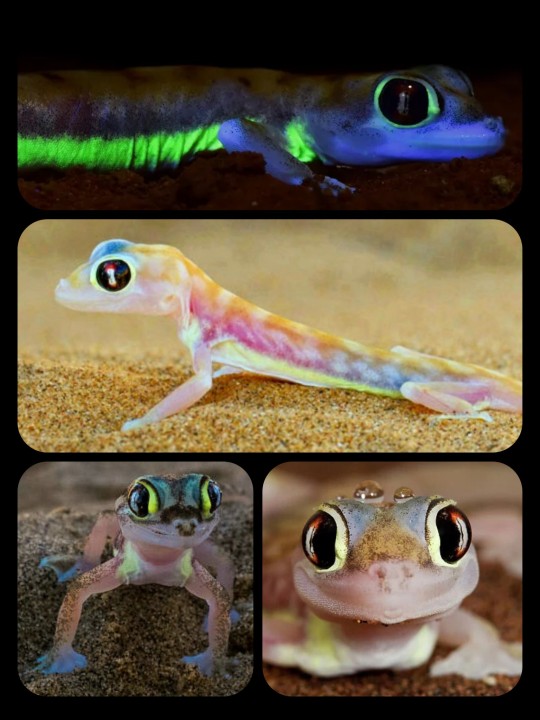
This species (Pachydactylus rangei) is found only in the Namib Desert, which stretches across Namibia, Angola, and South Africa; the geckos typically inhabit the arid, coastal region known as the Skeleton Coast.
In order to escape from the blistering heat of the desert, they use their webbed feet to burrow down into the sand during the day, and then emerge only at night, when the temperature has finally dropped. The webbing on their feet also enables them to run more easily across the dunes.

Namib sand geckos are covered in translucent scales, but they also have a strangely colorful appearance, as the colors/shades of their circulatory system, spinal column, internal organs, and optical membranes remain partially visible through the skin, producing various shades of pink, dark blue, purple, magenta, orange, and yellow.
They also have several distinctive markings running along their lower flank and encircling their eyes; these markings are known to fluoresce when exposed to UV light (including moonlight), emitting a bright, neon-green glow.

Some researchers have theorized that the biofluorescent markings may act as a signal to other geckos, allowing them to locate one another in the vast, desolate expanse of the desert, as this paper explains:
The fluorescent areas of P. rangei are concentrated around the eyes and along the lower flanks. This positioning is practically invisible to predators with a higher perspective (e.g. birds and jackals), but highly conspicuous from a gecko’s perspective. As P. rangei is sociable but generally solitary, and occurs at low population densities, such a signal might serve to locate conspecifics over greater distances ...
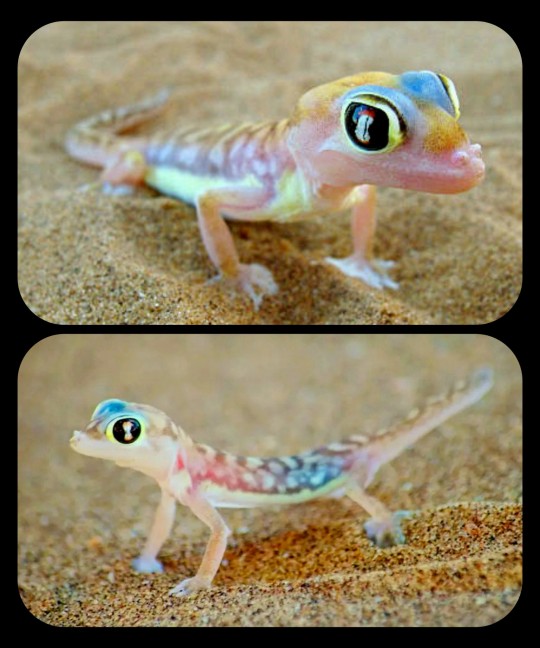
Encounters in P. rangei might serve purposes beyond mating opportunities: as the Namib desert has extremely low precipitation, fog is a key water source for its flora and fauna. Fog condenses on the bodies of the geckos, and they lick it from their faces. In husbandry, we have observed individuals licking water from conspecifics, taking advantage of a much greater available surface area.
Additionally, after short periods of isolation, the geckos run to meet each other. The combination of vital hydration with socialisation might reinforce signals that enable such meetings, and the cost of visibility to predators with higher vantage points, might constrain the signals to regions best visible from eye-level and below.
The Namib sand gecko is the only terrestrial vertebrate that is known to use an iridophore-based form of biofluorescence (you can find a more detailed explanation of that mechanism in the article mentioned above). The fluorescent dermal markings are also unique to this species.

Sources & More Info:
Scientific Reports: Neon-green fluorescence in the desert gecko Pachydactylus rangei caused by iridophores
Animal Diversity Web: Pachydactylus rangei
Dr. Mark D. Scherz's Blog: A Neon-Green Glowing Gecko!
Australian Geographic: Skeleton Coast - Namibia's strange desert dwellers
#herpetology#reptiles#gecko#Pachydactylus rangei#namib sand gecko#palmatogecko#namib desert#namibia#biofluorescence#animals that glow#lizards#cute animals#biology#nature#africa#squamata#web-footed gecko#cool animals#geckos#South Africa#Angola#Skeleton Coast#wildlife#not an arthropod#but still pretty cool
875 notes
·
View notes
Note
Now, I am from Turkey and I cannot speak for all Southwest Asian, North African and South Asian people out there, I can only speak of what I've spotted based on the info I have. But Radz-at-han def has some Turkish influence. The lamps on the bazaar are absolutely same with the ones in Grand Bazaar (Kapalıçarşı). There's meyhane! A win for Turkey Iran and Balkans! Also Akyaali (ak yalı in Turkish) means white beach literally. And not to forget Kapikulu. And the npc names: i have spotted fantasty versions of some turkish names. Oh and... Karniyarik is from Turkey (means belly splitted literally bc you split the belly of the eggplant). Thavnair itself does not look like Turkey at all fauna/flora/climate wise.
Tho South Asian influence is also very prominent in Radz-at-han/Thavnair. I think there's a good amount of Mughal Empire inspo there. But I don't have enough info to talk about it. I'll leave it to South Asian folks! I also think there's Farsi inspo. (Satrap is a title of ancient Persian empire). Like I said, feel free to correct me if i'm wrong!
For Ala Mhigo, I would say it has much SWANA influence overall. Especially Levant is very visible for me. Arak being Levantine spirit for example. And Sumerian Ziggurats. Also "ala" prefix/article.
I've spotted Turkish influence ( imambayıldi being a turkish food)(ala mhigan gown having anatolian kilim motifs)(conquest war against the neighboring nations in the past)(visual inspo from eastern, southeastern and inner anatolia for example: Cappadocia, salt lake area and salt industry. Travertines next to M Tribe and Travertines in Pamukkale. Tho Turkey is not the ONLY visual inspo for the region there are many many other SWANA inspos like i said, for exp: ziggurats).
Disclaimer: No matter how much inspo they have from the real world, Ala Mhigo and Radz-at-han are fictional. The inspos overlap a lot and most of the times they're not clear-cut. And sometimes they do not reflect the real world. I only mentioned of the things I've spotted. However, South Asia, Southwest Asia and North Africa are very diverse and beautiful regions with diverse cultures, civilizations and peoples and I don't have sufficient info to talk about it all so I am sure there are many things I've missed out on Ala Mhigo and Thavnair that my fellow SWANA people and South Asian folks can point out! Also both of these fictional countries have inspirations from other cultures as well (like ala mhigan monks). After all, Turkey is only a part of the inspiration both for Ala Mhigo and Thavnair. But it made me incredibly happy to see it. And i hope the real world inspirations in this game made the others happy as well!
(linking to my original post on this convo so i dont lose it again lmao)

thank you so much for your thoughts on this anon I really adore hearing about where people have seen their own cultures within the game! I think it's so super cool and im so glad you shared with me!
#ffxiv#i also love hearing about this stuff because im just#not super familiar with worldwide cultures and history aha#my area of knowledge is north american pre history#i can go on and on about clovis culture but uh thats about it aha#plus it makes me so happy when other people can go hey look that's me!!!#like knowing it made you super happy to see these influences in game makes me super happy too <33#i dunno i just love this stuff thank you so much for sharing!
60 notes
·
View notes
Text






South African flowers from the Babylonstoren gardens, Western Cape, South Africa
#south africa#africa#original photography on tumblr#flower photography#south african flora#flowers#western cape
10 notes
·
View notes
Text
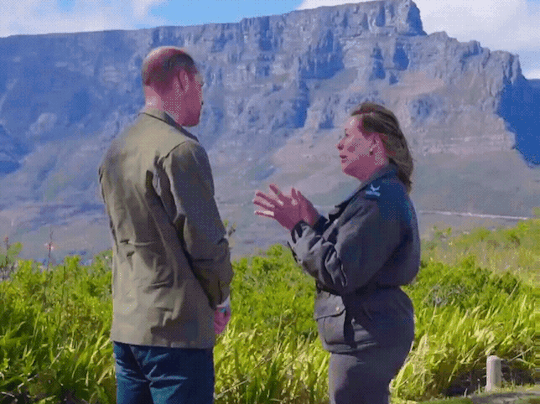
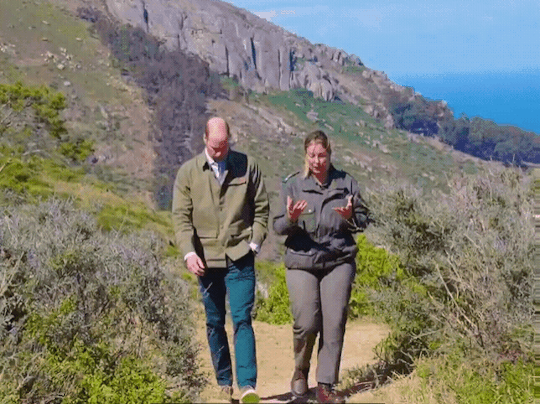
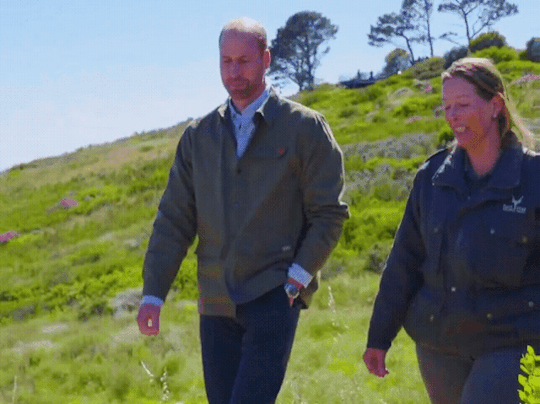
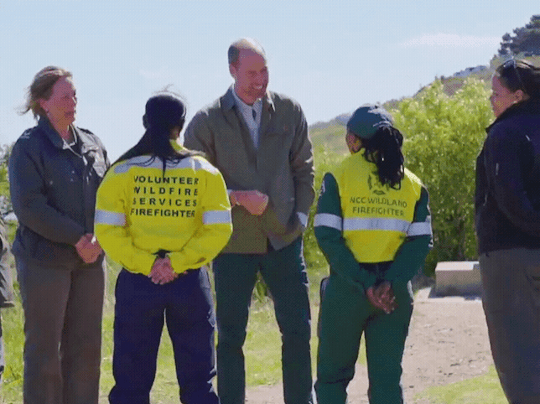
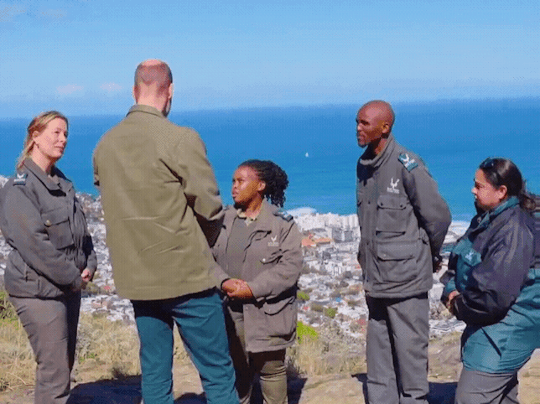
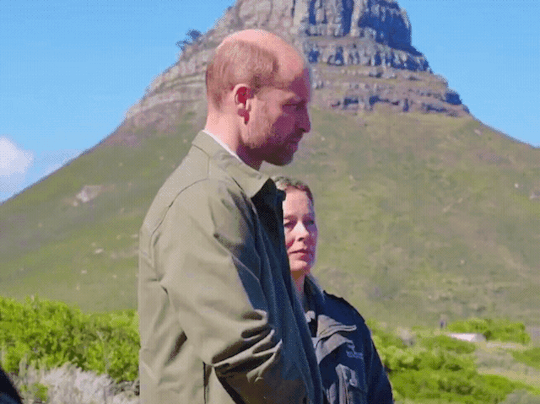
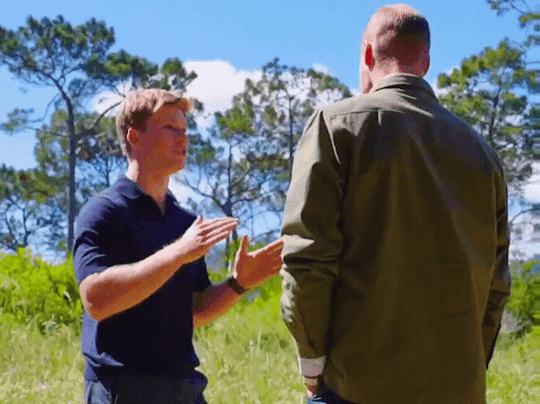
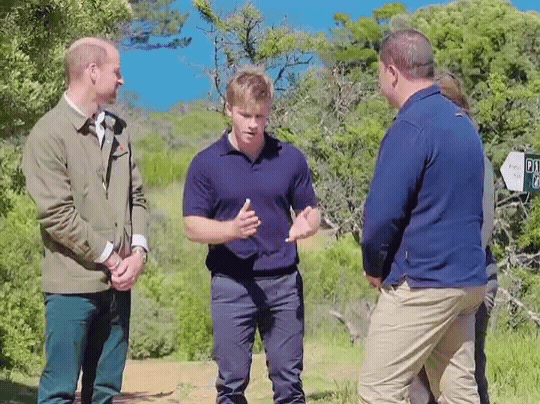

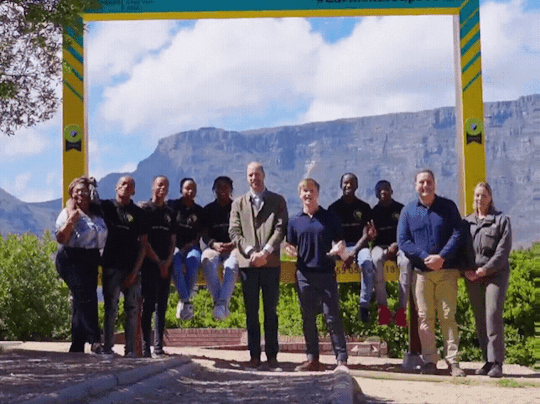
THE PRINCE DIARIES ♚
5 NOVEMBER 2024 || SOUTH AFRICA VISIT : DAY II (1/4) - TABLE MOUNTAIN NATIONAL PARK
The Prince of Wales attended a nature walk with park rangers and conservationists at Signal Hill which is part of the wider Table Mountain National Park as his first engagement on his second day in Cape Town.
He spoke to park rangers, firefighters, mountain rescue volunteers, biodiversity experts and youth volunteers from Mayine e-Africa about the rich diversity of fauna and flora, and the work that they do together to protect the environment while ensuring that residents and tourists are able to enjoy the park.
He was joined by Earthshot Global Ambassador Robert Irwin & Cape Town Mayor Geordin Hill-Lewis for the final stretch of the walk.
William and the rest of the attendees completed the walk at the iconic Cape Town Yellow Frame on Signal Hill.
#prince of wales diaries 2024#prince of wales diaries#british royal family#british royals#royalty#brf#royals#royal#british royalty#william wales.#prince of wales#the prince of wales#prince william#william prince of wales#5112024#SA24#SA24.2.1#SA24.2#Earthshot24#royaltyedit#royalty edit#royaltygifs#royalty gifs#royaltygif#royalty gif#my gifs#gifs
23 notes
·
View notes
Text
The global illegal wildlife trade is largely facilitated by organised criminal networks. For instance, pangolins are poached extensively in Asia and Africa to meet the demand arising from China. Research shows many other endangered species from the Global South end up reaching the Global North. For example, a recent study found that there were at least 292 seizures of illegally traded tiger parts at United States ports between 2003-2012; the majority of them from the wild in Asian countries where tigers still roam free. The over 6,000 wildlife seizures reported by European Union member states in 2018 represent 16,740 specimens of species protected under the Convention on International Trade in Endangered Species of Wild Fauna and Flora, and mostly originated from the developing world. Clearly, local harvesters in poor countries are not the ones organising complex transnational operations to transport wildlife parts across international boundaries. The international kingpins and an extensive network of smugglers run this nexus. If the aim is to break this cycle of crime, it is these networks that need to be disrupted; it is the consumers they feed who need to be penalised.
148 notes
·
View notes
Text
History yelling time, because I am a very excitable little bean. I know I probably wailywailed about this at the time, but I need to waily wail some more.

We get a very, very brief glimpse of this map, followed by Zheng's fleet coming through the jungle and the tiny moment of that had me yelling and flailing because it's a hugely significant historical place that she's bringing them across.
This is the Darien Gap, one of the narrowest points between the north and south American continents. This is a map from 1732, where you can still see a spot marked "New Caledonia" (ie. New Scotland).
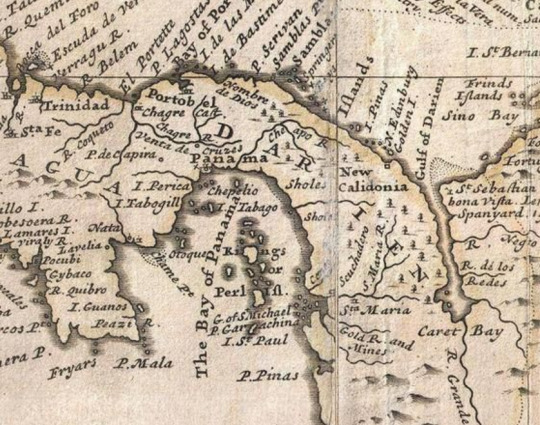
In the late 17th/early 18th century, Scotland tried to set up a crossing from the Atlantic to the Pacific in order to make a fortune in trade by cutting out the need to go around South America and/or Africa. It did not end... well. That is an understatement.
The fact that Zheng is specifically bringing them across at the point where the New Caledonia settlement was based tickles me so much. She's succeeded in doing the crossing and she's done it with a large number of her ships so discreetly that no one has noticed. She's someone who has plans and contingencies and Gets The Work Done.
She also has a varied and diverse crew who would bring different experiences and knowledge to the table unlike the herd of very beige Scotsmen who got to Darien and couldn't deal with the climate, the bugs, the altitude, the flora, the fauna and... well... everything.
And while some people wondered what that scene was kept in for since her ships were blown up - only her ships that were already in the Caribbean were blown up. As you can see on that first map, she has a whole queue lined up to come over. It's all optimistic set-up for S3: her second fleet is coming and Ricky is gonna rue the day he pissed her off.
And for the curious, a connection was eventually made in/around that specific area, but not until the late 19th century and it was only completed in 1904.

112 notes
·
View notes
Photo




I really don’t know Jack still? do you?
Maybe @spatheandspadix might shed some light on this one.
perhaps y’all have noticed extreme variations in populations of this classic spring plant.
Here is this one:
Narrow spathed, cupped, vibrant color, acuminate and small. Potentially A. acuminatum???
Ahh yes, a classic to run into while out and about in the forest in May, I still don’t know what subspecies this is and its been in my drafts since like 2016, odd enough I didn’t think this complex would be unresolved this long considering the fact that cernua complex, rudbeckia fulgida complex, and eastern Viola complex(shout outs to Iris Copen and Dr. Harvey Ballard the homies from OU and ODNR/ONAPA) have all had papers since then and so far 3 subspecies have been noted and gone through chromosome analysis and ITS analysis. Non of which are the jack you see above.
Jack in the Pulpit is an incredibly variable and diverse complex/sect. that we see often enough. Morphological variants and subspecies are very noticeable when they occur due to multiple characteristics such as soil specific populations and floral ridges, dwarf like traits, or tapering like you see above.
Flora of the south eastern USA states this:
“ A genus of about 150-170 species, of Asia, e. North America, e. Africa, and Arabia. Infrageneric taxonomy follows Ohi-Toma et al. (2016). The taxa of the Arisaema triphyllum complex have been variously treated as species, subspecies, varieties, and forms. They are here treated as species with relatively subtle morphological distinctions; they are broadly sympatric, and sometimes occur together in mixed populations with little sign of introgression or hybridization and seem to behave as biological species. Arisaema quinatum (mixed leaved jack) has often been treated as a full species and seems to warrant that status. Arisaema stewardsonii (big ridged hooded bog jack) seems amply distinct in morphology, northern distribution, and boggy habitat. Arisaema triphyllum (common jack) is tetraploid and does not produce fertile seed when crossed with the other (diploid) taxa, including A. pusillum (dwarf alkaline Jack), with which it is broadly sympatric (Treiber 1980). The size (though diploid), strongly attenuated spathe apex, and geographic integrity seem good reason to accord A. acuminatum (narrow pointed long spathe jack) species status as well. Species concepts in this treatment largely follow the review by Wyatt & Stoneburner (2022).”
All of this said we still have outliers like this one.
Opening like rich mesic hillside, overall alkaline. Caldwell NP, Cincinnati Parks, Cincinnati Ohio.
11 notes
·
View notes